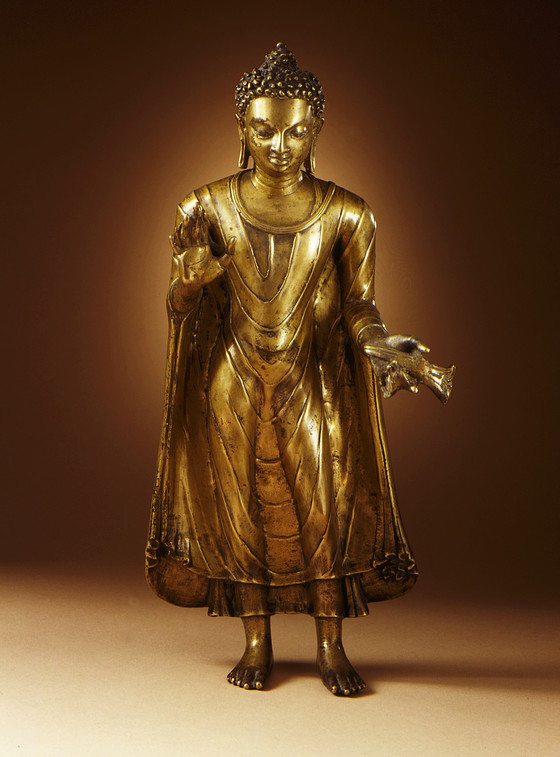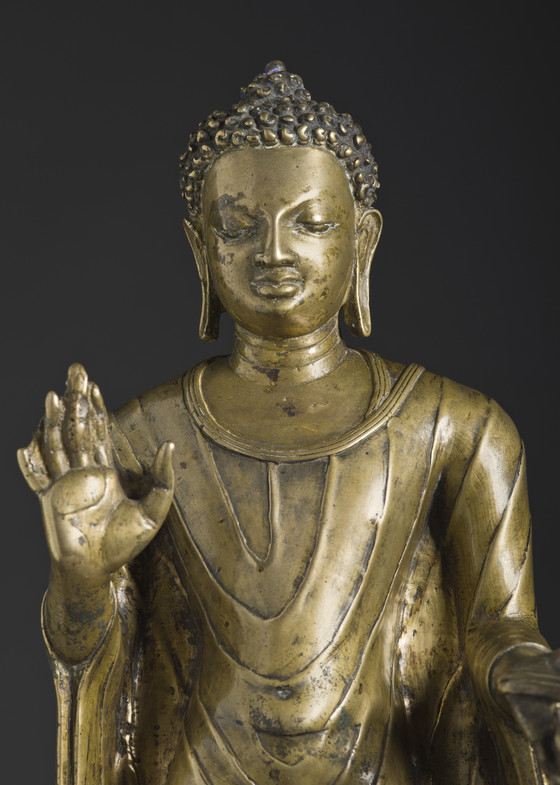Buddha Shakyamuni



Please log in to add this item to your gallery.
View comments
No comments have been posted yet.
Add a comment
Please log in to add comments.
Please log in to add tags.
* Nearly 20,000 images of artworks the museum believes to be in the public domain are available to download on this site.
Other images may be protected by copyright and other intellectual property rights.
By using any of these images you agree to LACMA's Terms of Use.
Buddha Shakyamuni
India, Uttar Pradesh, late 6th century
Sculpture
Copper alloy with traces of paint
15 1/2 x 6 3/4 x 4 in. (39.37 x 17.15 x 10.16 cm)
Gift of the Michael J. Connell Foundation (M.70.17)
Currently on public view:
Resnick Pavilion, floor 1
Resnick Pavilion, floor 1
Since gallery displays may change often, please contact us before you visit to make certain this item is on view.


